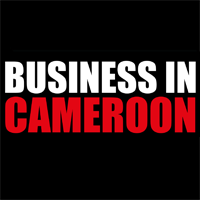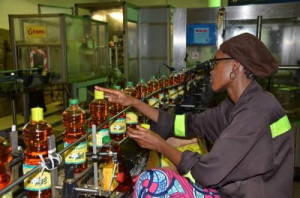
Cameroon seeks World Bank and AfDB’s support in debt settlement
On May 17, 2019, during a consultation organized jointly by the African Development Bank (AfDB) and the World Bank in Abidjan, Côte d'Ivoire, representatives of four African countries, including Cameroon, called for a balanced approach to the growing difficulty they face in paying off their debts.
While the Zambian and Senegalese representatives indicated that they are taking steps to address their debt, their Cameroonian peer Richard Evina Obam requested broader sources of financing, including Islamic Bank’s support.
Richard Evina Obam, who heads Cameroon Autonomous Amortization Fund (CAA), says that in the space of seven years, the profile of public debt in most low- and lower-middle-income African countries has deteriorated significantly. Moreover, the number of countries facing serious debt challenges has doubled. Côte d'Ivoire's Minister of Finance, Adama Koné, also called for an increase in “innovative and strategic sources of financing,” and suggested that “bonds denominated in CFAF be available on the markets.”
“World Bank’s International Development Association (IDA) and the African Development Fund (ADF) are working towards a joint mission to better address debt vulnerabilities in IDA and ADF countries,” replied Akihiko Nishio, the World Bank's Vice President of Development Finance.
The African Development Bank's Senior Vice President, Charles Boamah, said that debt management must take into account investment and development needs. To achieve its sustainable development goals (health, education and infrastructure), Africa needs $500 billion.
S.A
Cameroon: IMF to approve XAF329 billion ECF budget aid this year
Cameroon is expecting an aggregate amount of XAF329 billion in budget support under the 3-year economic and financial program (2017-2019) with the International Monetary Fund (IMF).
In detail, the country will receive XAF99 billion from the African Development Bank, XAF66 billion from the French Development agency, XAG56 billion from the World Bank. The European Union will contribute XAF23 billion while the IMF will give XAF86 billion.
Yet, the funding is subject to approval of the program reviews. The latest review, led by Corinne Deléchat, took place in Yaoundé from April 23 to May 3, 2019. “The IMF team has reached an agreement with the authorities on economic and financial measures that could support the approval of the fourth review of their program under the Extended Credit Facility (ECF) over three years,” Deléchat said.
She suggested that the IMF Executive Board could make a fifth disbursement of $76.5 million (nearly XAF45 billion) to Cameroon by the end of June 2019. This will pave the way to budget support from the other partners mentioned above.
S.A
Cameroon ranked top intra-African remittances provider in 2018, ahead of Côte d’Ivoire, South Africa, Ghana and Nigeria
The Ecobank Group has just published its financial report which provides data on Africa's place in global financial flows during 2018.
The document shows intra-African remittances represent 20% ($12.8 billion or XAF7,491.9 billion) of global financial flows during the period under review. With $2.15 billion (XAF1,258.4 billion), Cameroon was the first African country in terms of sending money to other African countries.
The central African country outperformed Côte d'Ivoire which sent $1.66 billion, or XAF971.6 billion, South Africa with $1.06 billion, or XAF620.4 billion, Ghana sent $1 billion, or XAF585.3 billion and Nigeria transferred $0.9 billion, or XAF526.7 billion.
Yet, Cameroon does not appear in the top 10 African countries that received remittances from abroad. Top 10 include Nigeria ($20.66 billion), Egypt ($19.71 billion), Tunisia ($2.35 billion), Algeria ($2 billion), Ghana ($2 billion), Senegal ($1.61 billion), Kenya ($1.56 billion), Uganda ($1.07 billion), Mali ($0.89 billion) and South Africa ($0.87 billion).
Sylvain Andzongo
Cameroon could lose XAF10bln a year, over a no-deal Brexit (UNCTAD)
The United Nations Conference on Trade and Development (UNCTAD) has recently issued a report on the potential impact of a no-deal Brexit on the UK's trading partners, including developing nations.
Implication
Research found that in the event of a no-deal Brexit, meaning if the UK did not reach an agreement with the European Union, Cameroonian exports to the United Kingdom would fall by 28%. This translates into a $17.1 million, or XAF9.9 billion, drop in export value.
As a result, the preferential margin granted to Cameroon under the EU-Central Africa Economic Partnership Agreement (EPA) would fall by 5.1%. The scenario will mostly affect banana and wood, the report points out. And the economic research and consulting firm BKP Economic Advisors says the Cameroonian banana alone would bear nearly XAF7 billion of annual losses. Cameroon ships on average 13% of its banana production to the United Kingdom.
Fearing such a dire impact, Cameroon and the UK already engaged negotiations since August 29, 2018, to reach a post-Brexit agreement that would ease trade between the two nations after the UK exits the EU. Agreement is expected to be signed in 2021.
Let’s recall that the UK's decision to exit the European Union came out after the March 27, 2017, British referendum. This implies the UK will no longer be part of the Economic Partnership Agreements between the EU and third world countries.
Brice R. Mbodiam
State payroll forecasted to increase by 3.3% to XAF1,058bln in 2019
Cameroon’s public wage bill is forecasted to increase by 3.3% to XAF1,058 billion this year, compared to XAF1,024 in 2018.
According to the finance ministry, this XAF34 billion increase is subsequent to new enrolments in the public administration and national army. “Cameroon’s public wage bill has been keeping a bullish trend. We went from XAF393 billion in 2006 to XAF945 billion in 2017,” Cyrille Edou Alo'o who manages the State Budget said last year.
The number of state agents grew from 163,000 in 2006 to 322,000 in 2017. Yet, the government is hoping to narrow the salary bill thanks to a physical counting operation of government personnel carried out between April 20 and July 10, 2018. Counting found that of the more than 310,000 public officials in registers, only just over 285,000 were actually active.
S.A
Lire aussi:
29-01-2019 - Cameroon: Government’s salary spending to grow to XAF128bln between 2019 and 2021
Fuel pump subsidy forecasted to grow by XAF 6bln this year
Government transfers and subsidies to public entities are expected to improve by 7.3% this year. The 2019 Finance Act provides for XAF512.3 billion in favor of these institutions, against XAF476.5 billion the previous year, this makes an expected difference of XAF35.8 billion between the two periods.
This augmentation, the Finance Act indicates, follows increases in subsidy to the national oil refining company (Sonara). “Subsidies to Sonara for fuel pump price support increased by XAF6.2 billion to XAF215.2 billion in 2019.”
If the sum is fully spent, Cameroon would face a 2012-like situation when the country spent XAF400 billion in fuel pump subsidy ; a situation in which financial partners such as the International Monetary Fund and the World Bank have a negative view.
These Bretton Wood institutions, insist that 74% of fuel subsidies benefits the wealthiest people on the Super, while the poor receive only 13% of the subsidies on kerosene. Yet, the Cameroonian government said the fuel pump subsidy is a welfare reform.
Sylvain Andzongo
Sodecoton: Oil sales up 64%, revenues up XAF7bln in 2016-18
State-owned cotton development company -Sodecoton- is gradually recovering following a decline over the past decade. Official data shows that revenues from the sale of cotton oil reached XAF17.7 billion in 2018 from XAF16.2 billion in 2017 and XAF10.7 billion in 2016, an improvement by XAF7 billion over the 2-year period.
Thanks to this significant upturn, a company executive said, Sodecoton now funds its current operation with revenues from the sale of cotton oil and cake, since March 2017, while it used to resort to loans. “The Diamaor oil (the company’s flagship oil brand) has never been so well on the market. Demand even exceeds offer, despite regular augmentation in production,” the executive said.
Back in mid-2016, due to poor sales of its flagship product, Sodecoton found itself with a stockpile of 149,000 oil packs and 4 million liters of unpackaged oil, all for an estimated value of about XAF9 billion. “This oil (Diamaor), so demanded by Cameroonians, has gone through a severe crisis in recent years, which has taken it off the shelves,” he explained.
“Poor sales were partly due to the high cost price, but mostly due to a marketing channel that benefited direct sellers. The latter acted as middlemen between Sodecoton and wholesalers and quasi-controlled the product. Many wholesalers had to give them margins to get the product. And as spillover effect, margins are recovered from semi-wholesalers, retailers and consumers. Consequence: the price of this oil brand skyrocketed and the product gradually disappeared from the market.”
In response to this situation, the company’s top management undertook as of 2016 to reorganize the marketing segment. Thus, the process to obtain cotton oil sale approval has been made easier and the company has signed performance contracts with sellers, meaning they now receive discounts based on volumes sold. Thanks to this reform, sales increased by 64% between 2016 and 2018.
Comforted by this good evolution, Sodecoton started injecting funds into the modernization and expansion of its oil mills. With a XAF2.5 billion loan contracted with Afriland First Bank, the company doubled capacity of the Maroua oil mill and plans to do the same at Garoua thanks to a XAF6 billion loan granted by the Arab Bank for Economic Development in Africa (Badea).
In the long run, Sodecoton aims to increase the crushing capacity of the two oil mills to 210,000 tons of cotton seeds, from 110,000 tons currently. Production is expected to surge from 1.13 million oil packs in 2019 to 2.15 million packs as soon as work is completed. Construction of a new oil mill is underway in the city of Ngaoundéré, it is reported, with a view to increasing cotton production to 400,000 tons by 2022
Brice R. Mbodiam
Cameroon only achieved 23% of investment spending in Q1 2019
Cameroon’s investment expenditure stood at XAF78 billion in Q1 2019 compared to XAF332.3 billion in Q1 2018. This represents a decline by XAF254.4 billion (-76.5%) between the two periods.
According to the finance ministry, spending execution rate as at March 21, 2019, was 23.1% since monies were XAF259.3 billion down the XAF337.4 billion expected for the quarter. The weak performance, the ministry says, is linked to slow evolution in main components of capital expenditure.
Equity-related spending reached XAF41.2 billion at the end of March 2019, down XAF101.2 billion (-71.1%) compared to the same period last year and down XAF163.2 billion compared to quarterly forecast of XAF204.4 billion (an implementation rate of 20.2%).
Externally funded investment expenditure declined by XAF151 billion year-on-year to XAF32 billion at the end of March 2019. Compared to the XAF123 billion forecasted, their implementation rate is 26%.
Restructuring expenses amounted to XAF4.8 billion at the end of March 2019, compared with XAF7 billion in Q1 2018. They are down by XAF5.2 billion compared to the XAF10 billion forecasted for the quarter, representing an implementation rate of 48%.
S.A
Cameroon: Non-oil revenues showed XAF150bln drop from forecasts in Q1 2019
Cameroon’s non-oil revenues as at March 31 this year stood at XAF649.1 billion, down XAF150.1 billion compared to the XAF799.2 billion quarterly forecast. This reflects an execution rate of 81.2%.
According to the ministry of finance, tax and duty revenues in Q1 2019 were XAF82.6 billion lower than the XAF543 billion expected. But monies grew by XAF12 billion (2.7%) to XAF461.3 billion compared to XAF449.3 billion in Q1 2018.
Compared to what was expected, Personal Income Tax (PIT) reached XAF78.5 billion, up XAF14.9 billion and reflects an execution rate of 126%; value added tax slipped by XAF14.1 billion (executed at 64.5%); non-oil corporate tax grew XAF17.3 billion to XAF141.9 billion for an execution rate of 102.2%; excise duties as well as registration fees and stamp duties fell by 3 billion and 9.5 billion, with implementation rates of 79% and 90% respectively; oil products tax (TSPP) rose by 0.2 billion to 32 billion, an implementation rate of 99%.
Customs revenues reached XAF153.9 billion in Q1 2019, down XAF56.5 billion compared to the XAF210 billion expected, an implementation rate of 74.3%. Compared to the XAF148.5 billion in Q1 2018, these revenues are up 5.4 billion (+3.6%).
Customs duties stabilized at XAF66.4 billion and import VAT fell by 4.7 billion compared to forecasts. Non-tax revenues fell by XAF5.8 billion (-14.6%) at an annual rate to XAF3.9 billion at the end of March 2019. Compared to the XAF45 billion quarterly forecasts, they are down XAF1.1 billion, a 75.3% implementation rate.
S.A
Cameroon: Current expenditure slid by XAF165bln from forecasts in Q1 2019
During the first three months this year, Cameroon saw its current expenses narrowed by XAF165.1 billion compared to what was expected. Whilst forecast was XAF611.3 billion, the amount finally used was XAF446.2 billion, an execution rate of 73%, according to the finance department.
Staff expenditure dropped by XAF25.8 billion from the XAF264.3 billion forecasted, representing an execution rate of 90.2%. On a year-on-year basis, they were down XAF20.7 billion (8%) in Q1 2019 compared to XAF259.2 billion in Q1 2018.
Monies steered in Services & goods over the period reviewed (XAF105.8 billion) reflect an execution rate of 53.9% compared to the XAF196.2 billion initially envisaged but are higher one billion compared to Q1 2018.
Pension spending stood at XAF101.9 billion in Q1 2019, up XAF12.9 billion (14.5%) compared to Q1 2018 and down XAF48.9 billion compared to XAF150.8 billion forecasted (an execution rate of 67.6%).
S.A
Mags frontpage
- Most read 7 days
- shared 1 month
- read 1 month








































